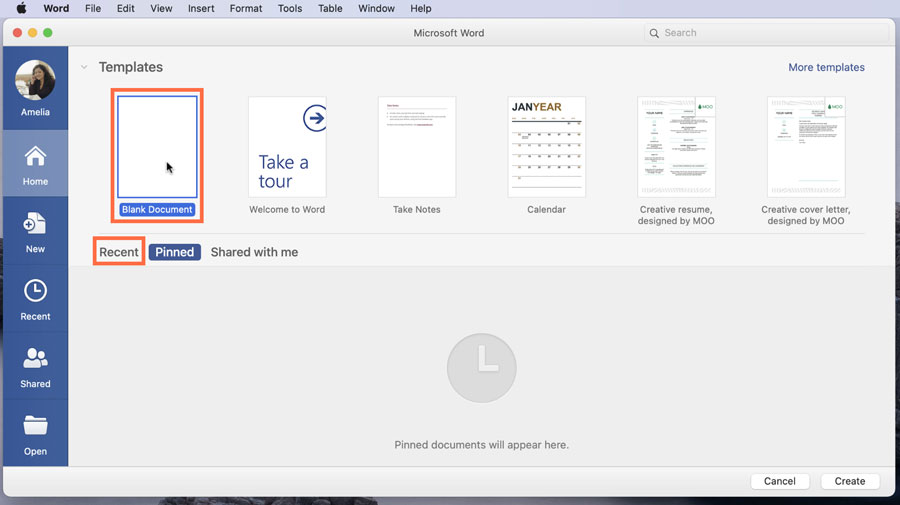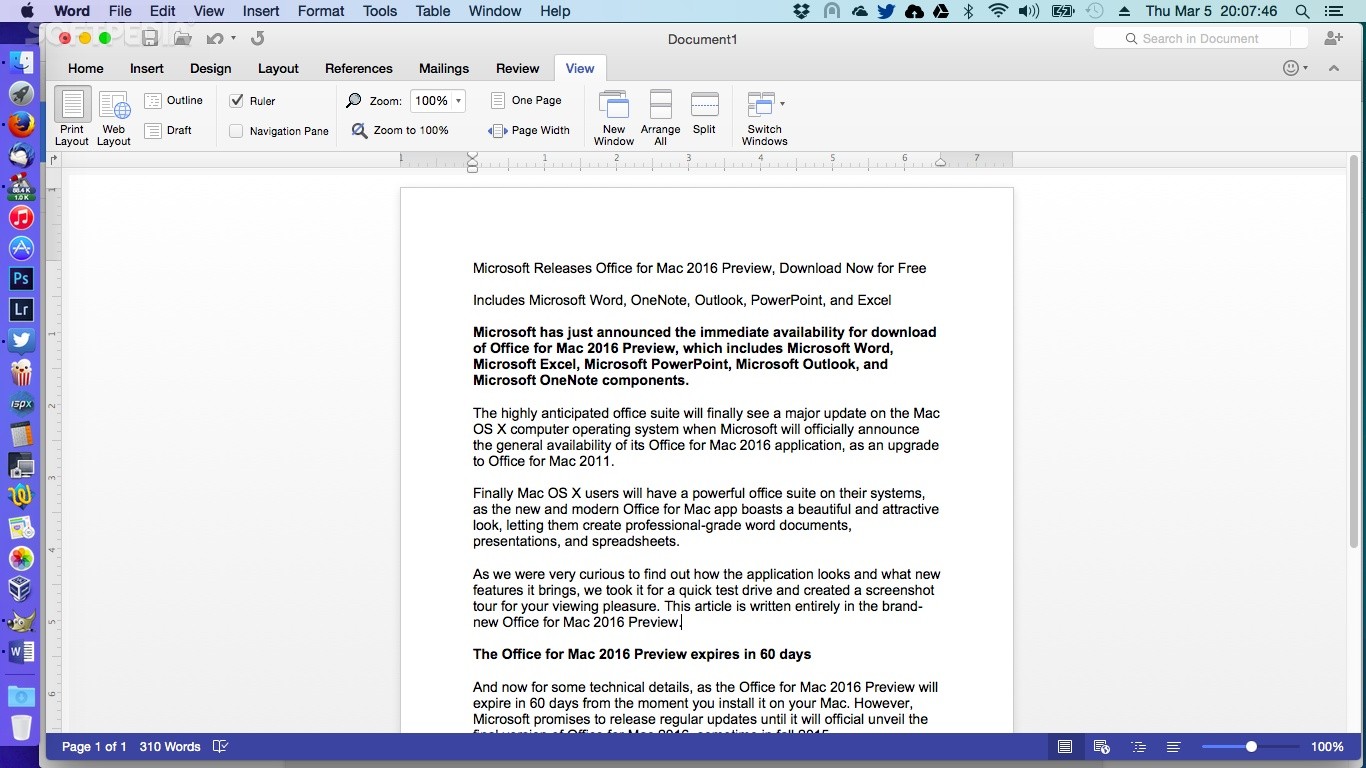
When Pages is first opened, users are presented with a template chooser which allows them to start with a blank document or with a predesigned template-including a basic, report, letter, résumé, envelope, business card, flyers & posters, cards, miscellaneous, and a newsletter section of templates-that contains placeholder text and images which can be replaced by dragging and dropping photos from the Media Browser. Pages is a word processor and page layout application. Some of these missing features were put back over the next releases but the current version (10.3.5) still lacks features from version 4.3, including mail merge, non-contiguous selection of text, advanced find/replace functions, the ability to print comments, and more. In this release, many templates, as well as some advanced features that were available in version 4.3, were not included.
#Word for mac for dummies free
On October 23, 2013, Apple released a redesign with Pages 5.0 and made it free for anyone with an iOS device. Pages for iOS 1.7.1 introduced better compatibility with Word and Pages for Mac, and version 1.7.2, released on March 7, 2013, merely added stability improvements and bugfixes. Pages for OS X was updated to version 4.3 on December 4, 2012, to support Pages 1.7 for iOS, which was released on the same day. iOS Pages was updated to version 1.6 on March 7, 2012, and will only run on iOS 5.1 or later. On October 12, 2011, Apple updated the iOS app to version 1.5, adding the iCloud "Documents in the Cloud" feature. On May 31, 2011, Apple updated the iOS version of Pages to 1.4, bringing universal binaries, allowing the app to be run on iPad, iPhone, and iPod Touch devices. On January 27, 2010, Apple announced a new version of Pages for iPad with a touch interface. Maybe not the way I would have designed it, but well designed for the intended purpose, nonetheless.On January 6, 2009, Apple released the fourth version of Pages as a component of iWork '09. I don't think it's overdone, I see a nice tool. If it were more fiddly, if it took more time to align, or occasionally let the watch slip out of alignment during the procedure, or lost accuracy to wear of adjoining surfaces over time, that would lead to it, on average, taking longer to repair any given watch, meaning either a larger backlog of watches to repair, or having to build more testing rigs and hire more technicians to repair the same number of watches. It's designed to be able to quickly take one top part out and drop the next top part in, without a lot of alignment needed. It also looks like you could potentially have one base and multiple top parts, so multiple watches could be secured into top parts while waiting their turn to be hooked up to the computer that's connected to the bottom part. I see something a bit over-designed, but intended to stand up to a lot of use, without wasting employee time ("oh, the transfer failed partway through because the watch got bumped"). Overdone as in, alignment, for instance, the top part is where the Watch would go in, it could be done in a much-simplified design, as in, you don't need the top part, just add alignment to the base.Įh, it looks like it's designed to get sub-millimeter-accurate placement, and to hold the Watch in that position for long periods of time without moving, to be quick and secure to set up accurately without any fiddling (thus the tapered pins), and to withstand hundreds or thousands of uses without that accuracy degrading. It likely uses USB 2.0 with speeds up to 480Mb/s. It's not clear why Apple has shifted to wireless diagnostics, and it's also not known how fast the wireless data transfer is.
#Word for mac for dummies series
Prior to the Apple Watch Series 7, Apple included a diagnostic port on Apple Watch models, with the port hidden under the band. An Apple Watch charging puck fits into the bottom piece, and then a second piece housing the Apple Watch itself fits over that and aligns with bolts.

The Apple Watch Series 7 dock is clearly designed for diagnostics, and it has a two piece construction. Brazilian regulatory agency Anatel has approved the Apple Watch Series 7 models and provided photos of the dock that Apple is using internally, with the information shared by Brazilian site MacMagazine. The dock was mentioned in one of the FCC filings, but we didn't have a clear visual of it until now.

Apple Watch Series 7 models are equipped with a module that enables 60.5GHz wireless data transfer as we discovered in FCC documents in September, with that data transfer capability designed to be used with a proprietary magnetic dock. The Apple Watch Series 7 models lack a diagnostic port under the band, which means Apple has to use another means to troubleshoot and restore Apple Watches that come in for repair.


 0 kommentar(er)
0 kommentar(er)
